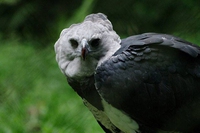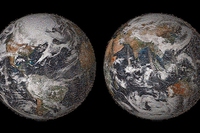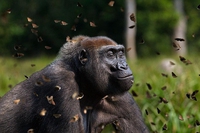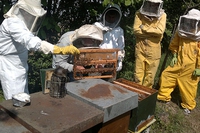
7 conservationists win Whitley Awards 2015
7 conservationists have been awarded the “Green Oscars” for their commitment in wildlife conservation
7 conservationists have been awarded the “Green Oscars” for their commitment in wildlife conservation
L’allarme viene lanciato dal Wwf che ha individuato undici aree in cui si concentrerà l’80 per cento della perdita di foreste.
In 2014, the number of environmental activists murdered has increased. Brazil is the most dangerous country for environmental defenders.
The National Aeronautics and Space Administration (NASA) is the US government space agency that has always been active in monitoring, defending and celebrating the Earth’s beauties. On the occasion of Earth Day, celebrated on 22 April all around the world, NASA released a series of extraordinary pictures of our planet. The photo gallery includes some of the most beautiful pictures
Eye contact between humans and dogs increases levels of oxytocin, the “love hormone”, research says.
A meeting between environmental, scientific and government organisations has yielded a programme to protect gorillas and chimpanzees.
In the Nepalese part of the Terai Arc, a narrow subtropical corridor connecting India and Nepal, women head a project of forest conservation and social development. Since 2001, they have been safeguarding biodiversity in an area of incalculable natural value, guaranteeing the “ecological, economic and socio-cultural integrity of the region”. The Terai Arc Landscape (TAL)
Obesity is a worldwide widespread disease. Such condition occurs when the intake of calories exceeds the amount of calories burnt. Obesity is due by poor nutrional education, sedentary lifestyle and other causes, such as genetic predisposition, family environment and social and economic conditions. Obese or overweight children do not necessarily eat too much, but they
The Canadian segment of the Rocky Mountains could undergo a drastic transformation, in less than 90 years. In fact, according to study carried out by the University of British Columbia and published by Nature Geoscience, Canada is likely to lose 70% of its glaciers by 2100, due to global warming. The province of
Honeybees and other insect pollinators are in danger. Since 2006 they have been experiencing depopulation that is mostly stricking European and US worker bees. The identified causes are multiple, such as pests and habitat loss, but the main cause seems to be linked to the agricultural use of 3 insecticides (the neonicotinoids) that affect insect pollinators’ nervous system.








